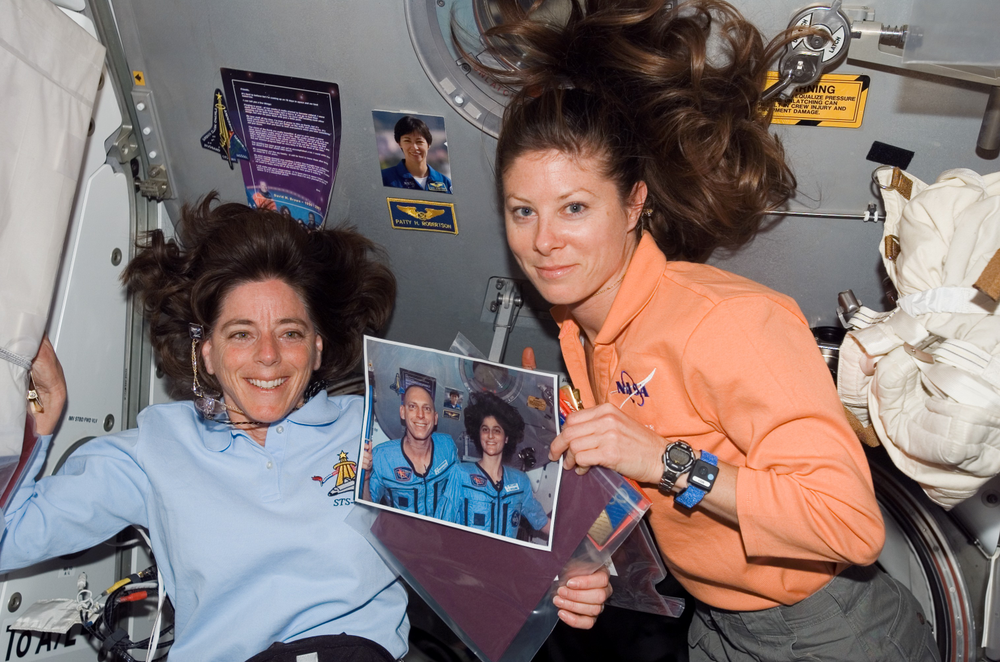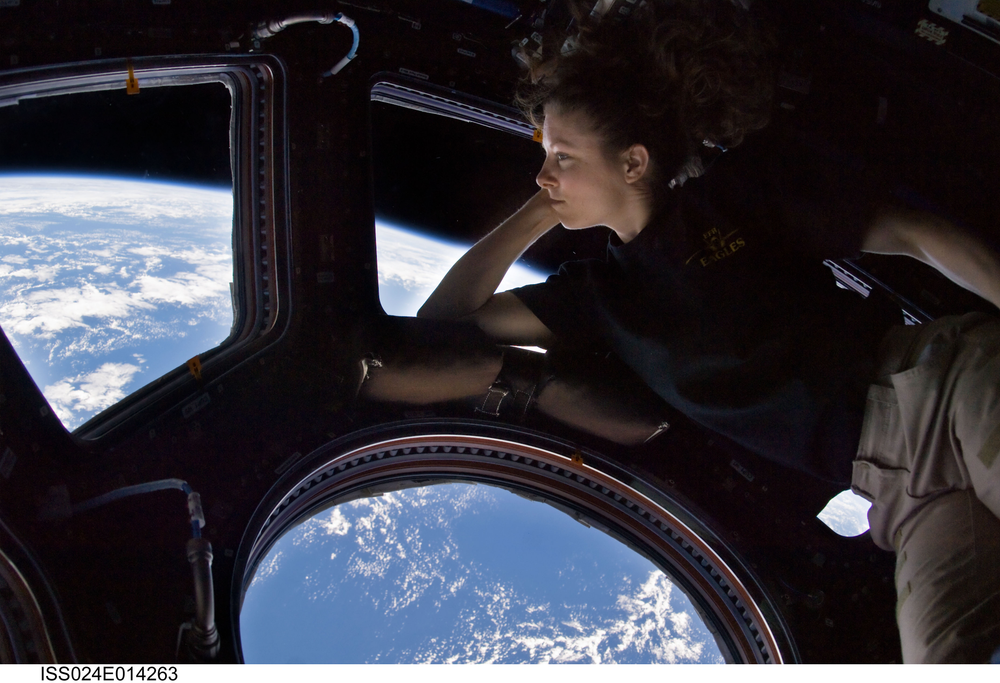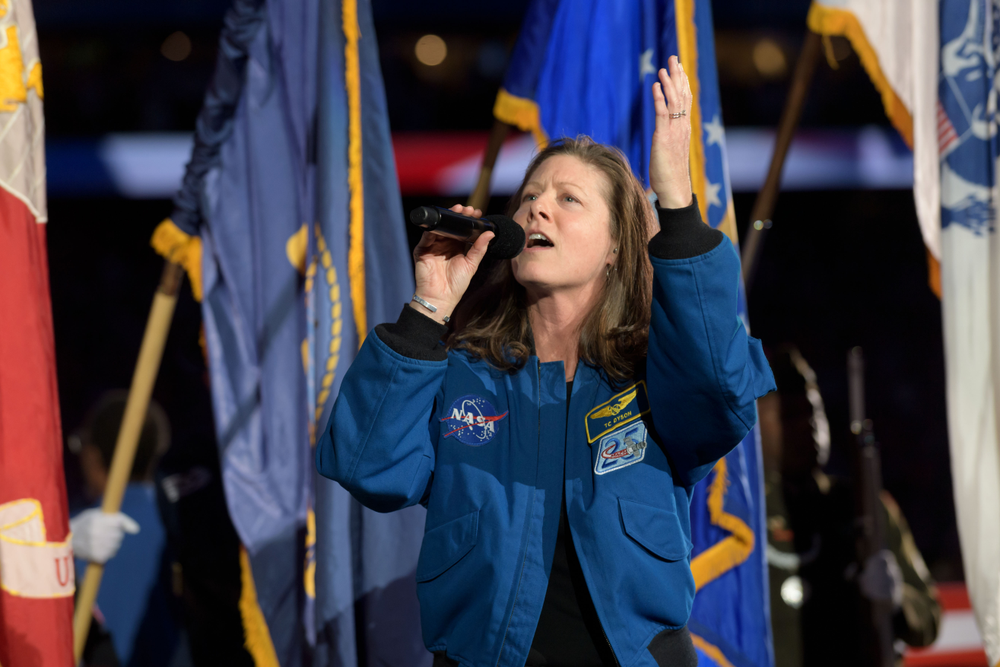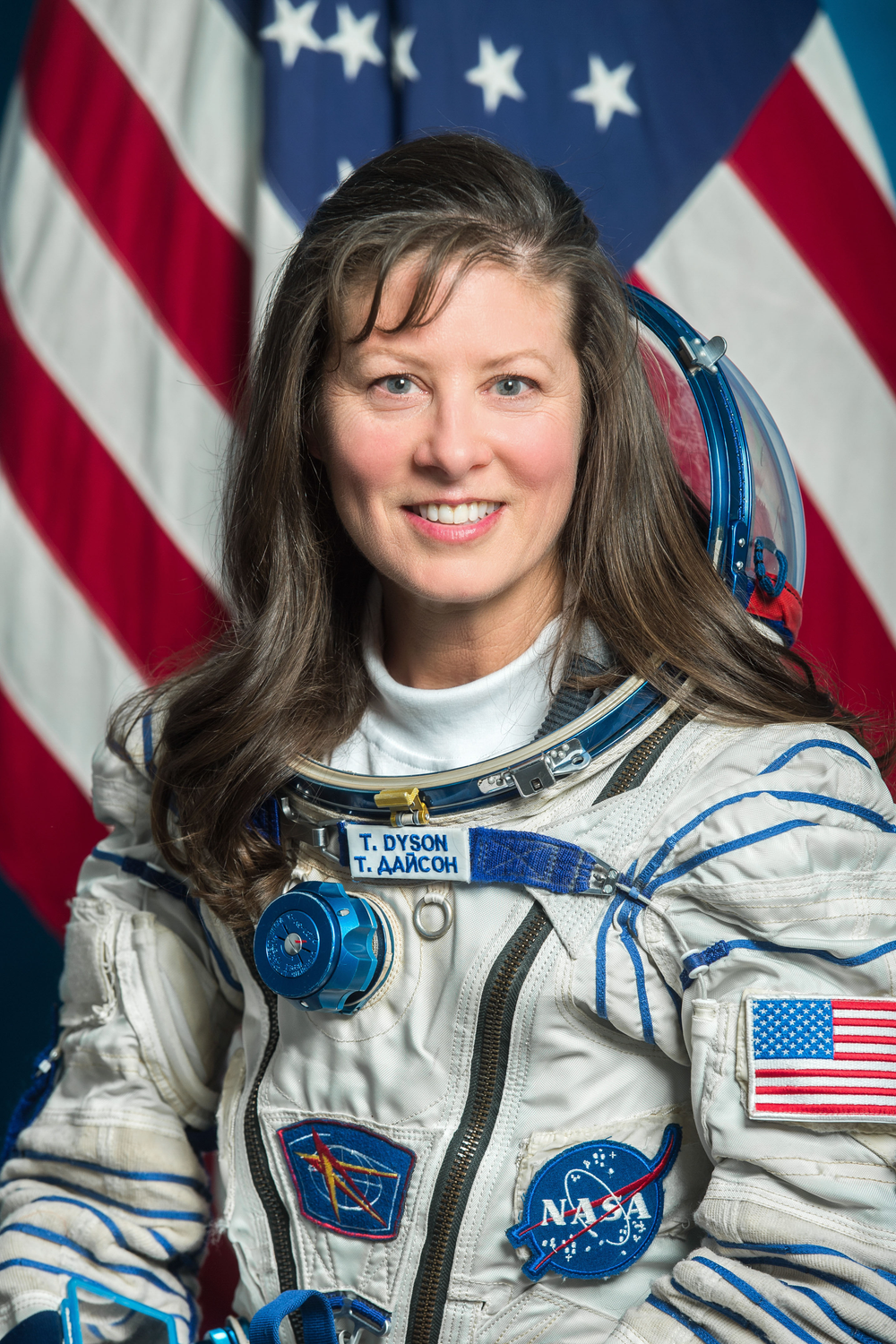Return To Space: An Interview with NASA Astronaut Tracy Caldwell Dyson
During her more than 25-year career as a NASA astronaut and a two-time spaceflight veteran, Tracy Caldwell Dyson now sets her sights on returning to space later this month aboard the International Space Station as a crew member of Expedition 70/71. Prior to launch, we had the chance to sit down and talk with Tracy directly and ask about her unique perspectives on life, experiences, and time as an astronaut.
Growing up, what initially inspired you to pursue a career in STEM?
I would say curiosity, mostly. Growing up, I asked questions such as why is the sky blue? Why does water boil? By the time I got to high school chemistry, I was able to get these and many more questions like it answered.
Were there any scientists, engineers, or even astronauts that inspired you along the way?
I would say it was mainly my father growing up. In junior high school, I began deciding on what to do and where to go to college and was at a time that the world was really excited about NASA and what they were doing in it. At that point, we were sending the first teacher into space Christa McAuliffe. I would say she inspired me to look at astronauts since it wasn’t until then that I really got inspired by it all.
Was there a pivotal step for you, either in life or academics, that really set you on your path to NASA?
I wouldn’t say just one moment, but rather a culmination of things. When I was younger, I worked for my father who was an electrician, and that was a huge part of my life outside of school and the sports I was involved in. My mom was also pivotal in my life as I emulated her and all her creativity.
Also, just having the courage to go to college and clinging to mentors, I had some great professors who were advisors and shepherded me. They took me seriously and invested in me. I think playing sports, running track, and all the work I did experiencing other cultures and languages helped. When you put all of that together, it represents what I do today as an astronaut doing construction on the International Space Station in the vacuum of space and all the work it takes to do what we do on those missions.
2333.png?generation=1710790769224348)
Moving forward to 2007, you had the opportunity to fly into space on your first mission, STS-118 aboard Endeavor. With this being an important mission for the International Space Station assembly process, how did that impact you in terms of being able to contribute to developing the station?
I certainly didn’t realize it at the time I was going through it, but that held great significance for me as I was participating in one of the most astonishing feats of human ingenuity and teamwork. It was also a time in our country’s history when skepticism was high. We were building this multi-billion-dollar space station, and today, the International Space Station is a marvel not only for our country but the world. Back then, it was hard to convince Congress and the public at large that what we were doing was going to pay off.
I’m also proud of what NASA and our global partners have done in not only building but utilizing the International Space Station for what I’d say is prestigious work, diplomacy, human welfare, and STEM. It was also with this flight, STS-118 and first long-duration flight on Expedition 23/24, where we were just finishing the assembly and finally starting to utilize it during my time as a veteran astronaut, which was also very rewarding.
Going back to your first flight, you had the chance to fly alongside Barbara Morgan, a former Teacher in Space participant. As someone who taught students yourself at University of California, Davis and continues to mentor those following in your footsteps, did she have a specific impact on you?
Heck yeah! Barbara was not only my crewmate but my astronaut classmate back in the class of 1998, and it was a thrill for that to come full circle for me. The part that inspired me was that she was the personal friend and back-up for Christa McAuliffe, the one who inspired me to even think about what an astronaut was. Now imagine the thrill for me to have Barbara and I beginning our journey together to become an astronaut to veteran space flyers. She has been an inspiration to me longer than I’ve known her personally.

Fast forward to 2010, you had the chance to fly into space a second time as part of Expedition 23/24. As you look back on that as being a long-duration flight, what were the most rewarding memories for you?
First of all, it was the types of EVAs (Extravehicular Activity or spacewalk) and the reason for doing one. It was the first time in the history of the International Space Station that we had a crucial contingency occur, specifically with one of our two pump modules going down and finding ourselves in the middle of an unplanned and unrehearsed EVA. We also did not have any procedures developed yet for this type of failure, and had to get out and fix this soon, or we would have to start thinking about evacuating the space station. It was also my first EVA, and there was all kinds of drama that ensued in having to deal with the cooling system for the space station. Also, each of us on the U.S. side of the station had to stay up all night to move the science from one freezer to another to save it due to the issue. It was really just a crazy period of time where everything we planned went out the window and the whole community on the planet had to come together. The fact that we successfully recovered the pump after that was probably the most rewarding part.
I think second to that would be my crewmates, who I was with throughout all the training and entire mission, that was pretty special. Then, of course, the cupola. Who doesn’t have a great memory of being inside that and looking out at our planet? It’s hard to just give you one and call it the most rewarding.

On a more personal note, it’s my understanding that you are the lead vocalist for the astronaut band, Max-Q. What led you to finding that talent and being able to utilize that outside of being an astronaut?
It all started when my sister asked me to sing in her wedding, which led me to get a voice coach to help me through the song she wanted me to sing. How I landed in Max-Q is a quirkier story since I did not audition. I happened to be working out in the gym, and Ken Cockerel, the chief of the Astronaut Office at the time, was working out at the same time, when the band asked us in between songs if we had any talent – we both responded with not being sure – and just like that we were in. I was also scared at the time to be singing in front of an audience, and it took several years before I could open my eyes and acknowledge there were people listening to us, but it was a bumpy start for me for a couple of years.

Looking now to the next couple of weeks, you will be flying into space for a third time as a crewmember of Expedition 70/71. With your experiences on previous flights, what are you looking forward to the most in terms of scientific and personal experiences, and what do you most hope to gain?
I think whatever God has in store for me – things just have a way of changing when you get up there. I’m looking forward to this great science component, and a few EVAs, and just experiencing life with my crewmates in a place where you live where you work and work where you live.
In terms of scientific research, there are many technology demos and investigations that I’m looking forward to having that be the emphasis of the work on the space station, since that is why we built it in the first place. As a trained scientist, it will be rewarding to see this kind of creativity on board now that I’m playing a role in helping perform it.

With the Artemis campaign taking shape, what are you most excited about in terms of humanity returning to crewed flights beyond low Earth orbit and taking the next steps needed to go beyond?
I think seeing what we’ve learned about working in low Earth orbit and applying it to a regime that we’ve yet to really experience. I’m also excited about how the advances in technology will enable us to get there and do useful work. Most importantly, I’m happy to see we are doing it as a planet. I do not see it being a sustainable project other than doing it as a global partnership.
Looking again at Artemis, with NASA introducing new astronauts into the corps, what advice would you give them as they begin to embark on their own journey and ambitious future spaceflights in support of the Artemis campaign?
As astronauts, they apply not just to spaceflight, but to the kind of environment they put themselves in with other people. I think it is less about yourself and thinking about other people. You learn more by listening than by talking, and nothing is more important than what you are doing right now. In other words, focus on what you are doing.
With NASA aiming to go back to the Moon, how impactful do you feel that will be not only for the space program, but for the world?
In addition to the nostalgia of what Apollo accomplished, there is this intrigue to see what is around the corner. Now that we are going there, not just to see if we can do it, but do while we are there. With the blossoming of technology in just the last decade, we’re going to see that put to creative ways on the [lunar] surface. The fact that we go as a global crew, will pack more of a punch in terms of what we will expect for ingenuity in this common purpose. If we’re going up there to explore and honor our closest celestial neighbor, I think we will accomplish many things together.
What advice would you give to the next generation of students growing up, either hoping to follow in your footsteps, wanting to be the next great engineer, scientist, or wanting to work at NASA one day?
I don’t think it would be any different from what I would tell the next class of astronauts. First, you learn more by listening than talking, and new students have a lot of knowledge and want to exercise it. It is good to realize that you are always a student and there will always be someone smarter than you. If you prioritize listening, it will reward you more. With that, think less of yourself and more about others, whether that is being an astronaut or someone working on a team on Earth to get us there. You build a team by serving others, and if you go with that mindset, you make yourself a valued member of that team.
***
Dyson will launch to the International Space Station with Roscosmos cosmonaut Oleg Novitsky and spaceflight participant Marina Vasilevskaya of Belarus aboard Soyuz MS-25 on Thursday, March 21. The launch is scheduled for 8:21 a.m. Central from the Baikonur Cosmodrome in Kazakhstan. Watch live coverage of the launch, docking, and crew welcome ceremony on NASA TV and the agency's website.
To hear more from Tracy, watch this Astronaut Moments video or listen to this episode of “Houston We Have a Podcast.”







